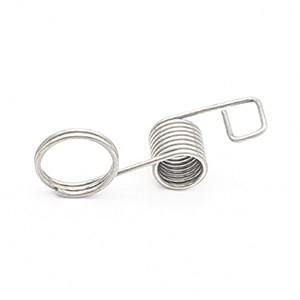Get unique, complex parts easily. No matter your requirements, Chaoyi Spring creates hard-to-produce coil springs and wire forms.
Let us help you create the custom wire form you need, from S-hooks and J-hooks to utility hooks and more.
We work closely with customers across a wide range of industries, helping them design and manufacture made-to-order parts.
Why choose Chaoyi Spring? We prioritize customer-focused collaboration, modern equipment and the latest technology to make your parts per print.
Find the information and guidance you need, from measuring a spring to learning about materials, placing an order and much more.
Coil springs, those ubiquitous helical components found in virtually every vehicle, play a crucial role in ensuring a comfortable and safe ride. These seemingly simple components are responsible for absorbing


Coil springs, those ubiquitous helical components found in virtually every vehicle, play a crucial role in ensuring a comfortable and safe ride. These seemingly simple components are responsible for absorbing shocks and vibrations, providing stability, and maintaining proper vehicle height. This article delves into the fascinating world of coil springs, exploring their construction, types, working principles, and the factors that influence their performance.

At its core, a coil spring is a helical spring, crafted from a length of tempered steel wire that's been wound into a tight spiral. The wire's diameter, the spring's overall length, and the number of coils determine the spring's stiffness, or spring rate, which dictates how much force is required to compress the spring a certain distance. A spring's rate isn't just about the number of coils—the material's properties play a crucial role too. A spring made from thicker wire or a higher-grade steel will be stiffer than one made from thinner wire or lower-grade steel.
Think about it this way: imagine a bouncy ball and a bowling ball. The bouncy ball is softer and more easily compressed, while the bowling ball is harder and requires more force to compress. Coil springs work similarly—those with higher spring rates (like a bowling ball) are stiffer, while those with lower spring rates (like a bouncy ball) are more flexible.
Coil springs aren't a one-size-fits-all solution. They come in various shapes and sizes to meet the specific demands of different vehicles and suspension systems. Here are some common types of coil springs:
Imagine driving down a bumpy road. As your wheels encounter a bump, the coil spring absorbs the impact, compressing under the load. This compression stores energy, preventing the shock from being transmitted directly to the vehicle's chassis and occupants. The spring then slowly releases the stored energy as it extends back to its original length, providing a smooth and controlled return to the resting position.
The magic of coil springs lies in their ability to transform jarring impacts into smooth oscillations. Their elasticity allows them to bounce back without transmitting the full force of the impact to the vehicle. This bouncing effect, combined with the damping effect of shock absorbers, ensures a comfortable and stable ride even over rough terrain.
Beyond comfort, coil springs play a vital role in maintaining vehicle stability. Their ability to resist compression and extension provides a crucial counterforce, preventing the vehicle from swaying excessively during cornering or braking. This stabilizing effect, combined with the damping action of shock absorbers, ensures that the vehicle remains planted on the road, providing a sense of control and predictability.
Let's consider cornering. As the vehicle leans into a turn, the coil springs on the outside of the turn resist compression, while those on the inside of the turn resist extension. This creates a balance of forces, preventing excessive body roll and maintaining the vehicle's stability. This stabilizing effect becomes even more important when driving at high speeds, where any deviation from the intended path can have serious consequences.
The performance of coil springs is influenced by a number of factors:
Just like any mechanical component, coil springs are subject to wear and tear over time. They can fatigue, lose their elasticity, and eventually become less effective at absorbing shocks and vibrations. Recognizing the signs of a worn-out coil spring is crucial for maintaining your vehicle's safety and comfort.
Here are some telltale signs that your coil springs may be nearing the end of their life:
Replacing worn-out coil springs is essential for maintaining your vehicle's safety, comfort, and handling. It's a job best left to professionals, as they have the specialized tools and knowledge to ensure proper installation and alignment.
Coil springs, though often overlooked, are vital components that contribute significantly to your vehicle's ride quality, safety, and overall driving experience. Understanding their construction, types, working principles, and the factors that influence their performance can help you appreciate their importance and ensure that your vehicle's suspension remains in tip-top shape. So, the next time you hit a bump and feel the gentle bounce, take a moment to acknowledge the silent but powerful work of those humble coil springs.
Coil springs, those unassuming yet indispensable components of your vehicle's suspension system, deserve a tip of the hat for their tireless work in ensuring a comfortable and safe ride. By understanding the factors that influence their performance and recognizing the signs of wear and tear, you can ensure that your coil springs remain in optimal condition, contributing to a more enjoyable and secure driving experience.
Browse some of the custom wire forms and springs that we manufacture. Don’t see what you need? We specialize in made-to-order products that meet your application requirements.
Visit Our GalleryNeed a custom wire form or coil spring? We make it work. Fill out the contact form and a representative will respond within 1 business day. If you have a PDF or CAD file, you can submit to request a quote.